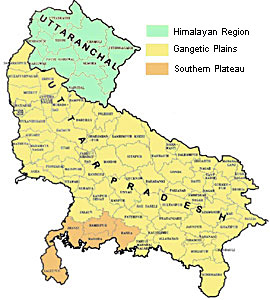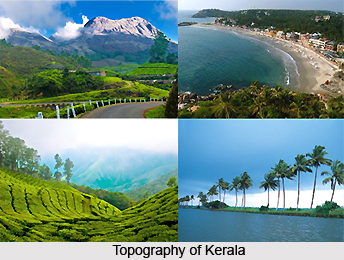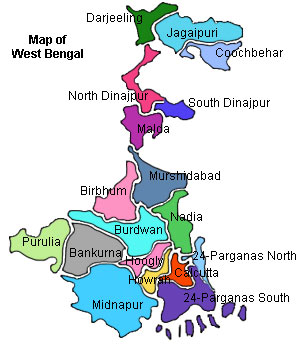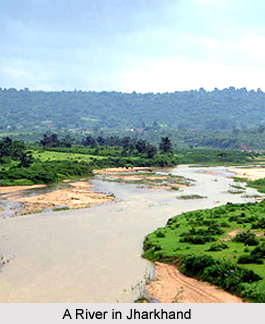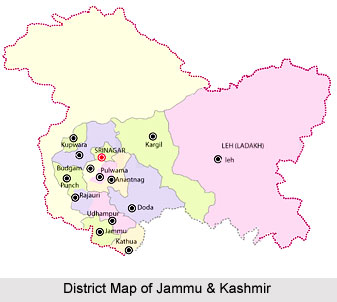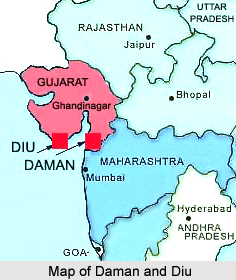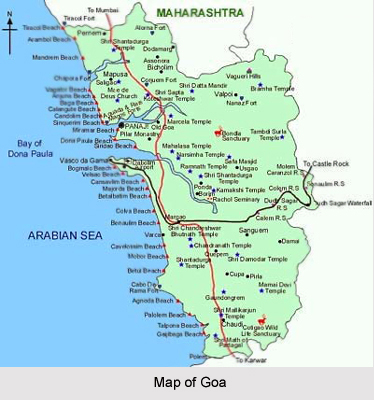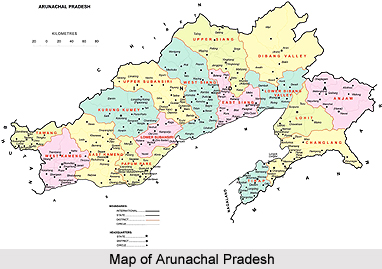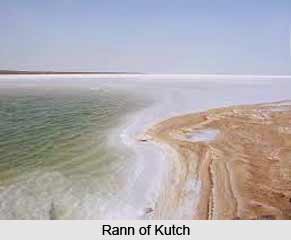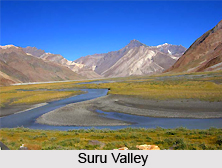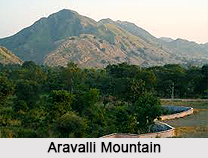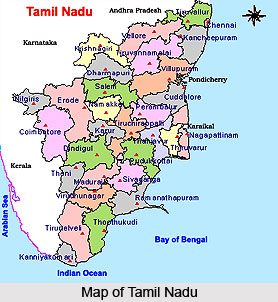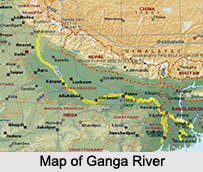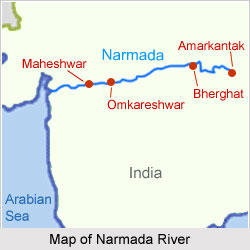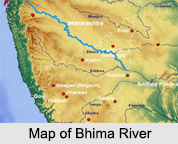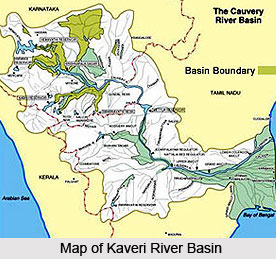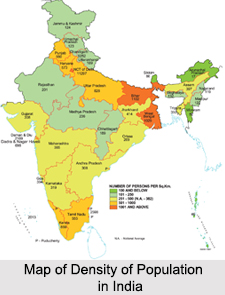 The density of population in India refers to the calculation of the population dwelling in each unit area or unit volume of the country. India is a union of 29 states and 7 union territories and according to the census of 2011, the population of the country has been estimated to be 1.21 billion which ranks it as the second most populated country of the world after the People`s Republic of China. It is the home to 17.5 percent of the population of the world and covers 2.4 percent of the total surface area of the world. The western and eastern coastal regions of Deccan plateau have been recorded as the most densely populated regions of the country. Thar Desert situated in western Rajasthan has been accredited as one of the most densely populated deserts of the globe. The northern as well as north eastern states of India are known for their low population density owing to their indomitable physical barriers.
The density of population in India refers to the calculation of the population dwelling in each unit area or unit volume of the country. India is a union of 29 states and 7 union territories and according to the census of 2011, the population of the country has been estimated to be 1.21 billion which ranks it as the second most populated country of the world after the People`s Republic of China. It is the home to 17.5 percent of the population of the world and covers 2.4 percent of the total surface area of the world. The western and eastern coastal regions of Deccan plateau have been recorded as the most densely populated regions of the country. Thar Desert situated in western Rajasthan has been accredited as one of the most densely populated deserts of the globe. The northern as well as north eastern states of India are known for their low population density owing to their indomitable physical barriers.
Measurement of Density of Population in India
Several methods are applied to calculate the density of population in India. Arithmetic density is measured in terms of square kilometres and refers to the overall number of inhabitants per unit land area. Agricultural density is the calculation of overall rural agrarian population per unit area of productive farming land. Physiological density is another attribute of population density and measures the overall population per unit area of productive farming land. The urban density is the metropolitan population dwelling in per unit area of urban land and the residential density refers to the population inhabiting a metropolitan region per unit area of housing space. Ecological optimum is the measurement of the density of population in India which is supported by the natural resources.
Factors affecting the Density of Population in India
There are a number of factors that affect the density of population in India. These comprise both human as well as natural factors. Natural factors include land relief, natural resources and climate. Low and flat lands have high population density whereas high or mountainous lands have low density. Areas having rich repertoire of natural resources have high density as compared to the regions which lack the resources. Temperate climate shelters a high population density while the regions exhibiting extreme climates have low density in terms of population. Human factors include the political, social and economic scenarios in which the places having stable scenarios have high population density.
Density of Population in India in 2011 Census
As recorded in the census of 2011, the density of population in India has increased considerably. The current population density of India is 382 per sq. km which is higher than the average population density of the world which is 46 per sq. km. The population density of individual states has also undergone substantial changes. The highest density of population has been recorded in the National Capital Region area of Delhi which measures 11,297 per sq. km whereas the lowest population density has been recorded for the state of Arunachal Pradesh, 17 per sq. km. Listed below are the density of population in India in the different states and union territories of the country.
| State/Union Territory | Density of Population |
| Uttar Pradesh | 828 /km sq (2,140 /sq mi) |
| Maharashtra | 365 /km sq (950 /sq mi) |
| Bihar | 1,102 /km sq (2,850 /sq mi) |
| West Bengal | 1,029 /km sq (2,670 /sq mi) |
| Andhra Pradesh | 308 /km sq (800 /sq mi) |
| Madhya Pradesh | 236 /km sq (610 /sq mi) |
| Tamil Nadu | 555 /km sq (1,440 /sq mi) |
| Rajasthan | 201 /km sq (520 /sq mi) |
| Karnataka | 319 /km sq (830 /sq mi) |
| Gujarat | 308 /km sq (800 /sq mi) |
| Odisha | 269 /km sq (700 /sq mi) |
| Kerala | 859 /km sq (2,220 /sq mi) |
| Jharkhand | 414 /km sq(1,070 /sq mi) |
| Assam | 397 /km sq (1,030 /sq mi) |
| Punjab | 550 /km sq (1,400 /sq mi) |
| Chhattisgarh | 189 /km sq (490 /sq mi) |
| Haryana | 573 /km sq (1,480 /sq mi) |
| Jammu and Kashmir | 56 /km sq (150 /sq mi) |
| Uttarakhand | 189 /km sq (490 /sq mi) |
| Himachal Pradesh | 123 /km sq (320 /sq mi) |
| Tripura | 350 /km sq (910 /sq mi) |
| Meghalaya | 132 /km sq (340 /sq mi) |
| Manipur | 122 /km sq (320 /sq mi) |
| Nagaland | 119 /km sq (310 /sq mi) |
| Goa | 394 /km sq (1,020 /sq mi) |
| Arunachal Pradesh | 17 /km sq (44 /sq mi) |
| Mizoram | 52 /km sq(130 /sq mi) |
| Sikkim | 86 /km sq (220 /sq mi) |
| Delhi | 11,297 /km sq (29,260 /sq mi) |
| Puducherry | 2,598 /km sq (6,730 /sq mi) |
| Chandigarh | 9,252 /km sq (23,960 /sq mi) |
| Andaman and Nicobar Islands | 46 /km sq (120 /sq mi) |
| Dadra and Nagar Haveli | 698 /km sq (1,810 /sq mi) |
| Daman and Diu | 2,169 /km sq (5,620 /sq mi) |
| Lakshadweep | 2,013 /km sq (5,210 /sq mi) |
